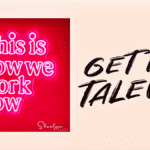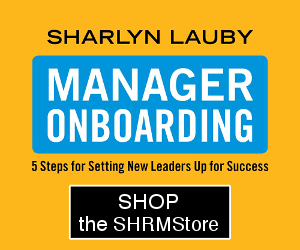(Editor’s Note: Today’s post is sponsored by our friends at iCIMS, a leading provider of innovative Software-as-a-Service (SaaS) talent acquisition solutions. For the second time, iCIMS has won the coveted 2013 Brandon Hall Group Bronze Award for excellence in talent acquisition technology. Congrats to them! Enjoy today’s post.)
During this year’s State of the Union address, President Obama mentioned the growing skills gap in the U.S. He talked about the need for the country to focus on job skills training by encouraging apprenticeships and internships as well as building stronger connections between the business and education communities.
A few days later, Hank Jackson, chief executive officer for the Society for Human Resource Management (SHRM), echoed the same message. He referred to our current skills gap as “the defining business challenge of our time.” For those of you out on Twitter, check out the hashtag #SkillsGap. A very interesting read.
The American Society for Training and Development (ASTD) defines the skills gap as “the gap between an organization’s current capabilities and the skills it needs to achieve its goals”. It’s the point where an organization cannot grow or expand because it’s unable to hire employees with the right knowledge, skills and abilities. The gap keeps companies from remaining competitive in the marketplace.
Right now, the skills gap is being felt by business. According to PricewaterhouseCoopers Trendsetter Barometer report, 57% of companies plan to hire this year. The same report says 25% cite finding qualified workers a barrier to growth. The demand for science, technology, engineering, and math (STEM) skills is particularly high and some new reports mention that our original estimates regarding STEM jobs might have been understated.
As human resources professionals, there are steps we can take to ensure we’re attracting the candidates that our organizations need now and in the future. The last thing we want is for the business to look at HR as the reason it’s unable to innovate the next big thing or accept a large project/client because the talent isn’t available.
The current skills gap conversation isn’t going away. In fact, the discussion promises to be more prominent in the months to come. Human resources would be well served to re-examine their current recruitment strategy to ensure they are doing everything possible to bridge the gap. Here are 5 things to consider:
1 – Build relationships with colleges and universities. Not just to show up on career day or hire new graduates. Business leaders should share with the education community the skills the business requires from graduates. They should also give feedback about the skills they are seeing in candidate interviews as well as the ones they’d like to see more. Hopefully those conversations will prompt revisions in curriculum. Because colleges want their graduates to get jobs.
2 – Create internal skills building programs. For those skills that cannot be obtained in the university setting (and we both know there are some), this is where corporations need to develop internal training programs designed to give employees the skills they need. Or partner with an external organization that can provide the skill. Either way, we have to realize everything cannot be learned in school and build a strategy for skills development within our organizations.
3 – Become knowledgeable on professional certifications and certificates. Many jobs and industries have specific certificate programs and professional certifications that provide continuing education for professionals. Partnering with these programs could provide a valuable source of applicant flow. It could also be a way to increase the skills of existing employees.
4 – Bring technology into the recruiting process. Candidates today want an easy application process. Frankly, we all want an easy application process – otherwise, candidates won’t use it. Taking advantage of what technology can do for us only makes sense. iCIMS Recruit provides organizations with a branded portal that allows candidates to easily apply for jobs and share jobs with their friends.
5 – Develop talent networks to engage with future candidates. There are some jobs that we know are tough to fill. With the skills gap, even more jobs will become a challenge. Creating a talent network to keep candidates engaged with the company only makes sense. However, a talent network will not be successful if you don’t start one until you need it.
Organizations must start developing strategies to deal with the effects of the skills gap. It’s not somebody else’s problem. It’s everyone’s challenge and it will take a while for us to deal with the impact. Being able to effectively recruit will take more than just the usual strategies.
[Tweet “Skills Gap – the defining business challenge of our time.”]
iCIMS realizes the challenges businesses face and has created the Hire Expectations Institute as a resource for both employers and job seekers. It contains articles, videos, whitepapers, webinars, and event schedules to make your recruiting or job search challenges easier. I hope you’ll check it out. There’s lots of great information to help with the stress of recruiting during the skills gap.









Mohammad Adnan says
“Hi Viewers,
Here’s a new debate on “Should Firms Allow Employees Flexibility to Work From Home?”
To vote for or against, kindly go through the link below:
http://arabbusinessreview.com/en/debate/should-firms-allow-employees-flexibility-work-home/475“
David Hunt, PE says
What skills gap? If there is a gap, it’s a willing to train gap.
And what is this about a shortage of people? Try looking in networking groups.
http://davidhuntpe.wordpress.com/2013/08/25/whacking-the-nerve-again/
Bree Bess says
I completely agree, the issue of a growing skills gap can be addressed with a strategic outlook in human resources. Organizations must alter their outlook when considering the skills gap. With the knowledge that employees may not be as prepared for the skills necessary for a job, an organization must plan ahead and utilize recruitment efforts and training to turn this potential obstacle into an opportunity for a highly trained and specialized workforce. The skills gap is not a “woe is me” problem but an issue that can be addressed through preparation, planning and training. With the large numbers of students looking for jobs, organizations have the opportunity to recruit at universities, train, and mold these employees with their values and teach them needed skills. With opportunities for continuing education and training, an organization can advance its employees while increasing the pool of skills needed to advance the organization and increase its competitiveness in the market while retaining employees.
Sharlyn Lauby says
Hi Bree. Thanks for the comment. I agree that organizations have a real opportunity to make a difference. It all depends on their outlook. But I’d also add that the “skills gap” issue will have to be addressed at an academic level as well. Possibly even at a government level.
Elizabeth says
I personally have experience using the applicant tracking system called iCIMS. The system is very unique with it’s recruiting style and training. It’s important for companies to keep up the competition with other similar companies. Strategies will help human resources professionals overcome the skills gap which involves the issues with finding the right skilled workers to fill positions. The issues I foresee with the suggestions in this blog is that if everyone becomes specialized and certified, how will workers survive in a versatile company? What is an employee in a specialized field was laid off – how will they find such a unique job opening in their area again? I believe in having an area of interest and even expertise but it is important to cross train employees and make sure you yourself know more than just your department. Companies value those with the most knowledge.
Sharlyn Lauby says
Thanks for responding. I totally agree that companies need to develop strategies to remain competitive. And that businesses will always be versatile. But there can be disadvantages with having a career that’s “a mile long and an inch deep.” Having depth of experience can set candidates apart. In addition, candidates can demonstrate their versatility by being agile and responsive to change.
Katie says
Internal skill building not only is a business need but it can also create a great work atmosphere if you employees who are engaged in the helping themselves while helping the business.
Love this post. Thank you for sharing.
Sharlyn Lauby says
Thanks Katie!
Elina @Directing Edge says
I think social media can also be a very good tactic nowadays to link to your prospective employees. You can find the right talent pool and assess them by interacting and expanding professional network.